Mon 24 May 2010
Reviewed by David L. Vineyard: DAVID DODGE – To Catch a Thief (Book and Film).
Posted by Steve under Crime Films , Reviews[22] Comments
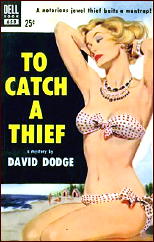
DAVID DODGE – To Catch a Thief. Random House, hardcover, 1952. Reprint paperback: Dell #658, 1953. Film: Cary Grant, Grace Kelly, Jessie Royce Landis, John Williams, Charles Vanel, Brigitte Auber. Screenplay: John Michael Hayes. Cinematography: Robert Burks. Directed by Alfred Hitchcock.
*Spoiler Warning* (As if anyone reading this doesn’t know the ending.)
It was hot, a still summer evening in August. Crickets sawed at their fiddles in the grass, and a bullfrog who live in a pond at the bottom of the garden was sounding an occasional bass note. John was burning letters in the fireplace when the crickets and then the bullfrog stopped.
For whatever reason, American writers in general haven’t fared as well as the British when it comes to international adventurers and jewel thieves (though one of the greatest of them all was Louis Joseph Vance’s Michael Lanyard, the Lone Wolf, and American Jack Boyle gave us Boston Blackie), so it is only fitting that one who did was the cosmopolitan David Dodge, who knew the Riviera like the back of his hand.
Dodge was well known for his tales of CPA slash detective Whit Whitney and South of the Border private eye Al Colby when he wrote this, but I don’t think most readers were ready for an American who did the whole Riviera scene as suavely as any Brit.
He also had a good ear and feel for rogues, slightly bent heroes who might have to think a bit before doing the right thing.
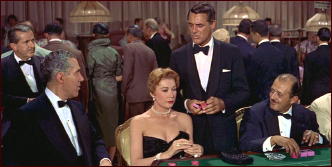
Somehow he managed to present them flaws and all as real human beings and not sociopathic thugs or emotionless robots. You tended to identify with and root for a Dodge hero without feeling guilty about it.
I won’t go into a lot of plot detail. Almost everyone reading this has likely seen the Alfred Hitchcock film (and if you haven’t, stop now, find it, and see it — it’s one of the best pictures of its kind ever made and unfairly overlooked by some because it does what it does so effortlessly) and knows the basic story. John Robie, an expatriate American living on the Riviera was once the infamous pre-war jewel thief known as Le Chat, the Cat to the world press.
Captured and sentenced just before the war Robie and his fellow crooks — many friends from his career as a circus aerialist (*) — are freed from prison by a bomb and join the Resistance to fight the Nazi occupation using their criminal skills. As a result, after the war they receive full pardons. Robie salted away his profits, bought a villa, and retired to grow his roses — even though some of his friends urged him to resurrect the Cat.
But someone has done just that, and the police are sure Robie is up to his old tricks. He escapes the police, contacts a Lloyds insurance investigator, and armed with a list of the most valuable targets begins to hunt the new Cat.
Meanwhile he finds himself falling for a headstrong American woman whose mother is on the list of the most likely victims and facing the enmity of his old friends — some of whom resent the renewed police pressure the Cat has brought on them, some of them who may be working with the new Cat.
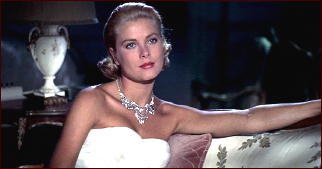
What I want to concentrate on here are the few differences between the novel and the film. They aren’t as many as usual, but never the less make for an interesting contrast of novel into film.
The novel opens as does the film with John Robie (Cary Grant) eluding the police via an escape plan left over from his days as the Cat. He goes underground and contacts some of his old ‘friends,’ including the sexually precocious daughter of one of them who has long had a crush on him.
As in the film he is captured, but the police reluctantly have to let him go. Having met the Lloyds insurance man, he contacts him and convinces him to take a chance on Robie’s innocence and join in the hunt for the new Cat. Posing as an American businessman he checks into the Hotel Midi and sets out to get close to American heiress Frances Stevens (Grace Kelly), who doesn’t wear jewelry, and her mother (Jessie Royce Landis)who clearly does.
Complicating things in the book is his desire to avoid hurting his honest friend Paul, who has trusted him. The character doesn’t appear in the film.
Other than some small differences the book is very close to the film until the end, when there is quite a bit of variation. As in the film Robie sets a trap for the Cat and a man is killed, but Robie knows that the man, the father of Danielle (Brigitte Auber), cannot be the Cat because he was crippled during the war. And so he has to go to the rooftops in order to corner the real Cat.
But the police aren’t interested in his theory and if he is caught on a roof at a robbery it could mean a lifetime in prison or death. Still, he convinces Francie to help him (in the book Paige, the insurance man has already paid off and given up) trap the new Cat.
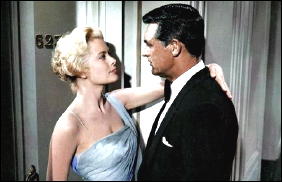
In the book — Robie’s honest friend Paul has fallen in love with Danielle, and Robie has to not only capture the Cat, but when he does, he has to return the jewels and save the new Cat from paying for her crimes all while avoiding the suspicious policeman Lepic (a good example of Dodge at play since slang for a French policeman is Le Flic).
What makes the novel worth the effort even if you have seen the film a million times (and I’m probably going on a million and one) is Dodge’s rare skills as a writer. There is nothing showy about it, but he is one of the best suspense novelists of his era, writing clean intelligent prose that reads more like the cool British thrillers of Victor Canning or Max Murray than the hard boiled American voice — though Dodge managed to stay well within that mode at the same time in a virtually unique combination of voice and style.
What holds you as you turn the pages of To Catch A Thief is not only the charm of the characters and the skill of the plotting, but the writing which is deceptively simple:
He had never seen her smile like that. He had wondered more than once what an expression of animation would do for her. Now he knew. She was alive, vital, sparkling…
“Hello, where did you spring from?”
“The diving raft. I saw you come down to the beach. I wanted to ask you a question.”
“You have good eyes if you could see me from the raft.”
“I have very good eyes.”
“What did you want to ask me?”
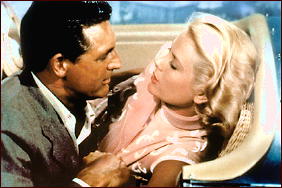
“It’s rather personal.”
“That didn’t bother you the last time we talked.”
“This is different… You’re Le Chat aren’t you?”
Later:
… Set a thief to catch at thief.
And still later on the rooftop of a villa waiting for the Cat:
Dodge wrote a number of good stand alone thrillers after To Catch a Thief (Angel’s Ransom, The Lights of Skaro, and Carambola) and they are well worth reading, including his final novel, The Last Match recently published by Hard Case for the first time. His books are sophisticated, well written, and stylish in execution and design, the international adventure thriller done to a T.
A friend of mine who was a mining engineer in Western Australia and other places that were the back of the beyond said whenever he could he traveled with a Dodge book in his few belongings. That’s about as good a tribute as any thriller writer can ask for, and one Dodge fully deserves.
(*) In case you ever wondered just how perfectly Cary Grant was cast as John Robie, in his youth Grant had been a circus gymnast.
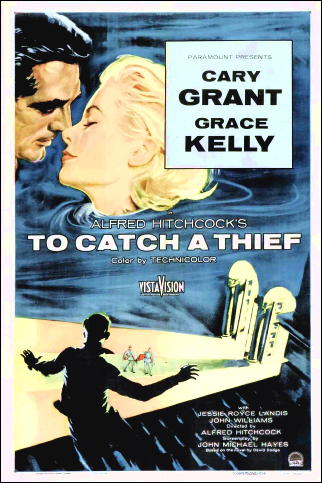
Previously reviewed on this blog:
Shear the Black Sheep (by Steve Lewis).
May 24th, 2010 at 6:51 pm
Thanks for the terrific review. I am familiar with Dodge from his Colby books, which are terrific fun. I have to admit I didn’t know he wrote To Catch A Thief. I need to track it down. Lat year, I purchased a DVD of the film, but have yet to watch it. The last time i saw it was on television a million years ago.
May 24th, 2010 at 6:59 pm
Wow, just checked a handful of internet bookseller sites. Gonna take some deep pockets to obtain a copy of TCAT. From $50 to $600 for copies. Sounds like this book needs to be reprinted!
May 24th, 2010 at 7:45 pm
Frank
I don’t know why this book should be so scarce, but it is. There might be a higher than usual demand for it, but why there should be only one copy of the Dell paperback on ABE, for example ($150 for one in Fine condition) I have no idea.
I sold a duplicate copy on Amazon last year in the $75 range, and it was in less than Good condition.
As for the movie, after reading David’s review, watching it again on DVD is now a must!
— Steve
May 24th, 2010 at 7:57 pm
Damn, sorry to read that the TCAT prices are so high. I was all set to track a copy down. 🙁
I have admired David Dodge for a long long time—as a TRAVEL writer. I found his best known travel book on my parents’ book shelves circa 1960 and read it to remind me of our 1954 trip to Europe. I’ve probably reread it 4-5 times since then. It’s only been in the last 15-20 years that I became aware of his suspense writing.
In spite of the fact that time, and history, have totally out-dated the details (large and small) of his travel book THE POOR MAN’S GUIDE TO EUROPE, it remains wonderful armchair travel reading because of the charm and ease of his writing style. He is, in fact, particularly good on France in general and the French Rivera in particular.
May 24th, 2010 at 8:18 pm
Steve … I plan on watching it later this week.
May 24th, 2010 at 10:11 pm
Before you shell out $150 for a paperback, TO CATCH A THIEF was reprinted as part of a READERS DIGEST CONDENSED BOOKS volume and there is a trade paper edition from Everyman Paperbacks (UK) 1988. Surely they are available cheaper than the Dell edition.
The READERS DIGEST is one of their better condensations.
That says, nice cover on the Dell and it is a mapback so that may contribute to its value.
Don’t know why this is so scarce. It should be the easiest of Dodge’s novels to find, but isn’t.
May 24th, 2010 at 11:15 pm
That’s a heck of thing, though, to have to read a Readers Digest condensation of a book. What a low blow!
Luckily for me (but no one else) I paid no more than 20 or 25 cents for either of the two copies that have come into my possession.
But that was then, and this is now, so I suspect, David, that your advice is awfully good.
— Steve
May 25th, 2010 at 6:18 am
What I noticed on 1st seeing the film was that it opened with a dark montage of the cat creeping across rooftops, then exploded into color for most of the running time, then segued back to the dark rooftops for the suspenseful climax. Nice bookending.
May 25th, 2010 at 7:03 am
The film is stunning to look at, but many critics dismiss it as mere fluffy entertainment — to which I have to add, what’s wrong with fluffy entertainment when it is done expertly by an outstanding cast in beautiful locations with a smart script? I don’t know about you but that is virtually my definition of entertainment. I’ve always thought it one of Hitchcock’s most accomplished films — perhaps not as dark as the films surrounding it (VERTIGO and REAR WINDOW) or as inventive as NORTH BY NORTHWEST, but one of the most entertaining and intelligent of the master’s best period.
And it also features three of the sexiest scenes in Hitchcock — with Grant both flustered and delighted by the rampant double entendres of the aggressive Francie and the predatory Danielle.
Frankly I like a film once in a while that thinks angst is something that only happens in opera.
Steve
Like you I think I paid all of 25 cents for my copy of the Dell book. The Everyman Paperback was around $8 new if I recall. Maybe someone can persuade Hard Case to reissue this since they have already done two of Dodge’s novels — it certainly is overdo.
ANGEL’S RANSOM, also a Dell paperback (with a McGinnis cover no less) is easier and cheaper to find. I don’t think either LIGHTS OF SKARO or CARAMBOLA were ever reprinted as American paperbacks sad to say, but my hardcovers didn’t cost much.
I’m ambivalent about READERS DIGEST editions. Of course the condensation and censorship is a pain, and yet they are often handsomely illustrated. Among others I first read in that format were Allingham’s TIGER IN THE SMOKE and several Helen MacInnes books — all with very nice illustrations. And if nothing else we owe them for that edition of Sherlock Holmes stories they did with Robert Fawcett’s illustrations, the illustrated BEAU GESTE, and CAPTAIN HORATIO HORNBLOWER illustrated by James Bama. Some of the finest American illustrators of the era worked on these books including Robert McGinnis. For collectors of illustration from that era they are a treasure trove.
They also did several good true crime books including GREAT SCOTLAND YARD CASES and INTERPOL, and four fine volumes collecting hard cover Gothic novels and Historical Novels. Considering you can pick them up for next to nothing they are a nice resource, and on older titles often much better reads than you might expect. It wasn’t until the mid sixties that they began to run into problems with books getting longer and dirtier and the condensations more ruthless.
I know it is ‘cool’ to condemn them, but I can’t imagine many authors refused to cash those lucrative checks because they objected to the cuts.
May 25th, 2010 at 10:11 am
I got a copy of TCAT many years ago for 10p (which even then was very cheap). That’s the last copy of ANY David Dodge book (new or second-hand) that I’ve ever seen. As far as my neck of England is concerned, he appears to have completely dropped off the map, which is a shame as I thoroughly enjoyed TCAT. Definitely time for a Dodge revival, I think.
I love the Hitchcock movie. You’re never really in any doubt that Grant will clear his name, so the only real suspense comes from wondering how long it will take our hero to get his leg over with Kelly. He does that about half way through the movie, so after that it’s just a case of watching beautiful, charming people being beautiful and charming in a beautiful and charming locale. It would only be disappointing if they still made movie like that and, hey, they don’t.
There’s an interesting side-line if you’re a DR WHO fan, as David Dodge’s next book was called THE LIGHTS OF SKARO (a thriller set in some mythical Balkan state). Dr Who’s arch enemies are the evil Daleks, who come from the planet…Skaro. One wonders whether the scriptwriter, Terry Nation, had read the Dodge book and decided to appropriate the name.
May 25th, 2010 at 1:33 pm
Bradstreet
More likely Nation got the name the same place as Dodge did, the Greek island of Skaro. Still, it would be nice if there was a DOCTOR WHO tie. I have to admit the first time I saw the title I thought it was a Who novel until I saw Dodge’s name.
I have to disagree about the film, because by your logic there is no suspense in any film with a major actor in the lead since in rare cases are Jimmy Stewart, Cary Grant, Clark Gable, or other stars going to be killed or lose out at films end. In fact the logical extension of that would pretty much put an end to movie watching period. You didn’t expect Harrison Ford to go back to jail in THE FUGITIVE I’m sure.
For me the film generates a good deal of suspense in how Grant extricates himself from the tight spot he is in, and the first time I saw it in the identity of the new Cat (it seems obvious now after repeated viewings, but was not then).
And while I love film noir, sometimes I may not be in the mood for bleak and hopeless. I think you and many under rate this film because it is so much exactly what Hitchcock intended it to be. Frankly I would not want this one to be burdened by a heavier and darker mood. The film is a brut of champange — don’t expect it to taste like forty year old unblended Scotch.
Of course everyone reacts to films differently and the critics tend to agree with you here, but in this case I think you are over thinking the thing. The mere fact that no one else has done anything half as skillful since seems to be a good indication that rare talent was involved in making this concoction as light as it is.
To mix a metaphor this is souffle, not a ten course dinner. If you don’t like souffle’s fine, but don’t expect them to be pot roast either when a souffle was advertised.
May 25th, 2010 at 1:59 pm
David
I think you may be mistaken on Bradstreet’s opinion of the movie — I didn’t read his comments on “beautiful people” the same way you seem to — but I’ll have to let him respond to you on that.
One point that both he and you have brought up, though, has always been a tough one for me to overcome when watching a movie.
There can never be any real suspense in any film in which a top notch star is the leading player. He is not going to die, no matter how tough the scrapes are that he gets into.
It all depends, I’ve had to conclude, on how convincing the performance is by that aforementioned top notch star. If he can convince you that it’s the character he’s playing that’s in all kinds of trouble, not the actor himself, then all is well.
Or if I, the viewer, can be content in wanting to know HOW he’s going to get out of trouble, not IF, then all is well.
But sometimes watching a foreign film or B-movie with no-name stars can be an advantage. Or a TV series like 24. Who’s left standing, now that the final season has ended? Jack Bauer and Chloe O’Brian? Anyone else?
— Steve
May 25th, 2010 at 2:39 pm
Bradstreet
If I misunderstood I apologize, but even if we do disagree, that’s just what makes horse races.
Steve
By the same logic it also means there can’t be much suspense in series books either. I think that is one of those things that you have to give a film or a book — willing suspension of disbelief. I’ve never had any problem with it, but that may be a lack of imagination on my part.
Though I have fewer problems with TCAT than some because I knew the infamous jewel thief the Jack of Diamonds, a Dallas based criminal whose identity was widely suspected after he retired, but who was never arrested or charged. I’m happy to say he was Cary Grant, handsome, charming, and a lady killer, as well as a very nice man — who just happened to steal jewelry for a living.
Everyone — the local police, the FBI, Scotland Yard, the Surete knew he was the criminal known as Jack of Diamonds (no relation to the George Hamilton movie) and no one could ever prove it. When he died the authorities went over everything he ever owned — and found nothing. To this day the cases involving him are still open. Some even suspected he taught himself to recut the jewels himself and reset them and acted as his own fence.
I tried to talk him into writing his memoirs when I was in my twenties but he just smiled. His identity was an open secret — even his neighbors — not far from where George W. Bush lives now — knew who he was — but since he never stole in Dallas or from friends no one cared.
But having known him many fictional characters don’t seem half as unlikely to me as they may to others.
May 26th, 2010 at 2:53 pm
David: Apology accepted! 🙂
You really did misunderstand my feelings about TCAT, but that’s my fault, I think. The movie really is one of Hitch’s lightest movies, which is why I love it so much. I’m a big fan of VERTIGO, but it’s not really a movie that you can sit down with at any time and watch for FUN. TCAT is a film that I’ve put on when I’m feeling stressed out and miserable and old, and each time it has left me feeling like I’ve drunk a really good glass of champagne. It’s that much fun! But equally, you have to admit that whenever they show a clip of the movie on some documentary, it’s often the scene where Grant and Kelly get together to shots of fireworks going off! Whilst Grant is sometimes in peril, this is very much a romantic thriller-with the accent on romantic. Anyway, the whole thing is academic because I’ve seen the movie loads of times, so I know how it’s going to end (in fact this whole thing has left me wanting to watch it again…)
That stuff about The Jack of Diamonds is fascinating. It’s lovely to know that these sorts of characters exist outside the world of fiction. Has anything been written about him since his death?
May 26th, 2010 at 4:05 pm
Bradstreet
Sorry if I misunderstood, but critics are so dismissive of this one — largely because it succeeds at exactly what it aims to be.
And I agree, it is tonic when you are feeling low.
As far as I know nothing was ever written about the Jack of Diamonds. The police tried to pretend he didn’t really exist and was really several people misidentified as the same man and since there was no evidence and his family still lived in Dallas and were fairly prominent …
I did dig a around a little, but it would have taken years, money, and some real breaks to find anything, and even then I knew his family and would have hesitated to write anything without their approval. The trail is too cold now and everyone involved is dead, so … Nothing is colder than old crime news.
But he was a charming character more like someone from a book or movie than you could ever expect to meet. And ironically, it was at his home I met Conrad O’Brien-ffrench who was one of the models for James Bond (he at least wrote a book and you can find his website about his remarkable career). Even at the time I thought just how ironic it was that I was sitting in a room with Raffles and James Bond.
Maybe someday someone with more time will dig around and find the complete story, but for now he is that rarity — the one that got away with it. Even Adam Worth and Charles Peace did prison time — but not the Jack of Diamonds. A woman inspector on the Dallas police department told me once they that Scotland Yard thought they had a line of him once through the playing card he left at his crimes — only to find he never used the same brand of deck twice.
But it is heartening to know that some of the brighter and more playful fictional characters had actual models and counterparts. And frankly I got the impression after his death that embarrassed police forces the world over would just as soon leave him rest in peace once they discovered there was noting incriminating to find. Though the rumor he was buried with the loot was not true. The police looked, before and after.
I like to think he is still laughing.
May 26th, 2010 at 5:30 pm
I’m sure that he is.
Thanks for the info. Raffles meets 007…the mind boggles!
May 31st, 2010 at 4:18 pm
What a thrill to find this lively discussion. If anyone is interested in learning more about David Dodge, please visit my website, A David Dodge Companion: http://www.david-dodge.com/
I had the privilege of knowing Dodge’s daughter, Kendal (if you’ve read any of Dodge’s travel memoirs, you know her too!), and she was a great supporter of my and others’ efforts to keep her father’s work alive.
I can’t give any details yet, but there are some irons in the fire to revive more Dodge works. Stay tuned. I am certainly glad to hear that there are readers waiting.
Dodge’s inspiration for TCAT came when he, himself, was suspected of being a cat burglar. He had just arrived in the south of France when a string of jewel heists began. The villa next door to his was robbed, right at the time that he left the country temporarily. When he returned, he discovered that the local police had suspected the mysterious American of being the thief. Fortunately, the real thief, one Dario Sambucco, was captured before they launched a full-scale manhunt for Dodge. The book, he said, practically wrote itself.
May 31st, 2010 at 4:29 pm
Randal
Great news indeed, if you’re planning to get David Dodge back in print. Please email me directly when you can say more, and I’ll give the news a post of its own, up front and center.
Best
Steve
May 31st, 2010 at 4:46 pm
Thanks, Steve. Will do.
November 10th, 2010 at 12:38 am
At last! A new edition of TO CATCH A THIEF is now available in a trade paperback format. You can find it on Amazon: http://www.amazon.com/Catch-Thief-David-Dodge/dp/0982633939/ref=sr_1_5?s=books&ie=UTF8&qid=1289278057&sr=1-5
November 10th, 2010 at 1:32 am
Good news! And it’s selling well, too. Its current Bestsellers Rank: #296,745 in Books, which is not bad at all. Congratulations to all who helped get this book back in print.
August 5th, 2014 at 11:52 pm
Great review – I absolutely LOVE the book’s cover (the art was sensual and amazing!, LOVE the book (have an old worn copy bought from a second hand shop years ago) and especially LOVE the film.